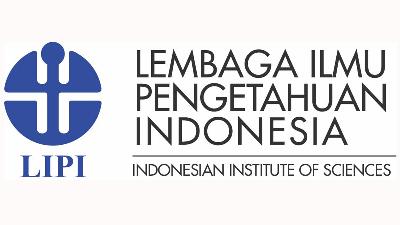Preliminary Study on Identification of Sociological Perspective to Landfill Management Facilities over Bakung landfill, Bandar Lampung, Sumatera
Abstract
Keywords
Full Text:
PDFReferences
A. Periathamby, “Waste: A Handbook for Management,” in Waste, Academic Press, 2011, pp. 109–125.
L. A. Guerrero, G. Maas, and W. Hogland, “Solid waste management challenges for cities in developing countries,” Waste Manag., vol. 33, no. 1, pp. 220–232, 2013, doi: 10.1016/j.wasman.2012.09.008.
F. Farizal, R. Aji, A. Rachman, N. Nasruddin, and T. M. I. Mahlia, “Indonesia’s Municipal Solid Waste 3R and Waste to Energy Programs,” Makara J. Technol., vol. 21, no. 3, p. 153, 2018, doi: 10.7454/mst.v21i3.3536.
Badan Pusat Statistik, Environment Statistics of Indonesia: Waste Management. BPS–Statistics Indonesia, 2018.
E. Munawar, Y. Yunardi, J. Lederer, and J. Fellner, “The development of landfill operation and management in Indonesia,” J. Mater. Cycles Waste Manag., vol. 20, no. 2, pp. 1128–1142, 2018, doi: 10.1007/s10163-017-0676-3.
C. Meidiana and T. Gamse, “The new Waste Law: Challenging opportunity for future landfill operation in Indonesia,” Waste Manag. Res., vol. 29, no. 1, pp. 20–29, 2011, doi: 10.1177/0734242X10384013.
U. Iryani, D. A., Ikromi, M., Despa, D., Hasanudin, “Characterization of Municipal Solid Waste ( MSW ) and Estimation of Karakterisasi Sampah Padat Kota Dan Estimasi Emisi Gas Rumah Kaca di Tempat Pembuangan Akhir ( TPA ) Bakung Kota Bandarlampung,” J. Nat. Resour. Environ. Manag., vol. 9, no. July, pp. 218–228, 2019, doi: 10.29244/jpsl.9.2.218-228.
B. Rahardyan, T. Matsuto, Y. Kakuta, and N. Tanaka, “Resident’s concerns and attitudes towards Solid Waste Management facilities,” Waste Manag., vol. 24, no. 5, pp. 437–451, 2004, doi: 10.1016/j.wasman.2003.11.011.
S. Barr, Factors influencing environmental attitudes and behaviors: A U.K. case study of household waste management, vol. 39, no. 4. 2007.
S. Regmi, B. Johnson, and B. M. Dahal, “Analysing the environmental values and attitudes of rural Nepalese children by validating the 2-MEV model,” Sustain., vol. 12, no. 1, 2020, doi: 10.3390/SU12010164.
K. Böhm, E. Smidt, and J. and Tintner, “Application of Multivariate Data Analyses in Waste Management,” in Multivariate Analysis in Management, Engineering and the Sciences, intechopen, 2016, p. 13.
B.-S. of Indonesia, “Teluk Betung Subdistrict in Figures 2019.”
K. Vehkalahti, “Reability of Measurement Scales Tarkkonen’s general method supersedes Cronbach’s alpha.,” University of Helsinki, 2000.
H. K. Mohajan, “Two Criteria for Good Measurements in Research: Validity and Reliability,” Ann. Spiru Haret Univ. Econ. Ser., vol. 17, no. 4, pp. 59–82, 2017, doi: 10.26458/1746.
D. Allingham and J. C. W. Rayner, “Testing equality of variances for multiple univariate normal populations,” J. Stat. Theory Pract., vol. 6, no. 3, pp. 524–535, 2012, doi: 10.1080/15598608.2012.695703.
R. Maskey, J. Fei, and H. O. Nguyen, “Use of exploratory factor analysis in maritime research,” Asian J. Shipp. Logist., vol. 34, no. 2, pp. 91–111, 2018, doi: 10.1016/j.ajsl.2018.06.006.
K. Miller, J. G., Yang, Handbook of Research Methods in Public Administration. CRC Press, 2008.
E. Phelia, A., Damanhuri, “Evaluation of Landfill and Cost Benefit Analysis Waste Management System Landfill ( Case Study TPA Bakung Bandar Lampung City ),” vol. 25, no. 2, pp. 85–100, 2019.
W. Citrawan, “Diguyur Hujan Lebat, Gunungan Sampah di TPA Bakung Longsor,” Lampost.co, Jul. 09, 2019.
Hadiyatna, “Akibat hujan, tumpukan sampah TPA Bakung alami longsor,” antaranews, Bandar Lampung, May 20, 2020.
F. Hadinata, B. Susanti, M. Soraya, and A. S. Silaban, “The effect of degradation on changes in physical and hydraulic characteristics of organic waste,” Int. J. Sci. Technol. Res., vol. 8, no. 12, pp. 2567–2572, 2019.
B. Al Farishi and M. R. Setiawan, “The Mapping of Contamination Potential Surrounding Bakung Landfill Based on Geological Studies,” IOP Conf. Ser. Earth Environ. Sci., vol. 258, no. 1, 2019, doi: 10.1088/1755-1315/258/1/012022.
E. Tagaris, R. P. Sotiropoulou, and C. Pilinis, “A Methodology to Estimate Odors around Landfill Sites : The Use of Methane as an Odor Index and Its Utility in Landfill Siting A Methodology to Estimate Odors around Landfill Sites : The Use of Methane as an Odor Index and Its Utility in Landfill Siting,” no. July 2014, 2003, doi: 10.1080/10473289.2003.10466198.
M. Aatamila et al., “Odour annoyance and physical symptoms among residents living near waste treatment centres,” Environ. Res., vol. 111, no. 1, pp. 164–170, 2011, doi: 10.1016/j.envres.2010.11.008.
A. Al-Khatib, A. A. Hammad, O. Sharkas, and C. Sato, “Public concerns about and perceptions of solid waste dump sites and selection of sanitary landfill sites in the West Bank , Palestinian territory,” Environ. Monit. Assess., vol. 187, no. April, 2015, doi: 10.1007/s10661-015-4401-1.
Y. Che, K. Yang, Y. Jin, W. Zhang, Z. Shang, and J. Tai, “Residents’ concerns and attitudes toward a municipal solid waste landfill: Integrating a questionnaire survey and GIS techniques,” Environ. Monit. Assess., vol. 185, no. 12, pp. 10001–10013, 2013, doi: 10.1007/s10661-013-3308-y.
L. Mulyatna, A. Rochaeni, E. M. Thariq, P. Studi, T. Lingkungan, and U. Pasundan, “TPA SARIMUKI TERHADAP LINGKUNGAN PERAIRAN SEKITAR Abstrak Pengumpulan Data Hasil dan Pembahasan Hasil Kuisioner Metodologi Penelitian Lokasi Penelitian,” vol. 1, no. 1, pp. 32–39, 2017
Refbacks
- There are currently no refbacks.

This work is licensed under a Creative Commons Attribution 3.0 License.
Supported by :


 Indexed by :
Indexed by :




